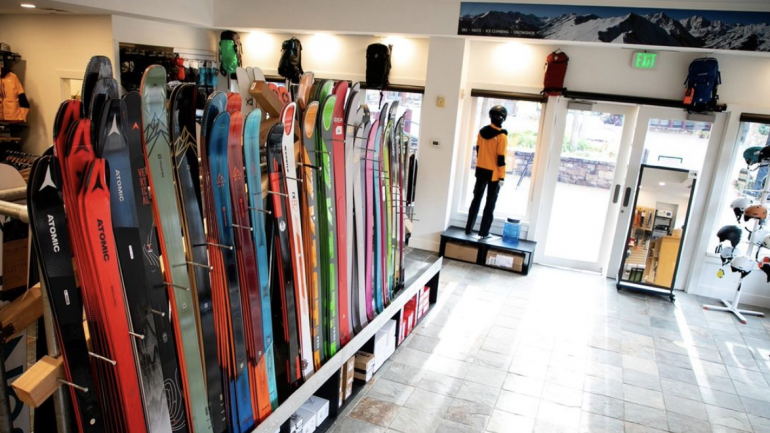
Secondhand shopping is big business these days. Online fashion resale giant ThredUp estimates the global clothing resale market will be a $350 billion enterprise by 2027. The trend is clear in fast fashion, but even for technical ski products, more people are turning to used. Online outdoor gear reseller GearTrade sold 85,000 used products in 2023, up 86% from 2021.
Buying lightly used ski gear is a great way to refresh your setup for less, but despite the popularity of buying used, there’s more demand than supply.
Aaron Provine, President of GearTrade, told me, “The used market as a whole is growing. Inflation is pinching people. Younger generations are more sustainably oriented as are outdoor consumers generally and they realize there are reasons outside of profit for selling your old gear.” But he notes that they still have more buyers than sellers.
That’s where you come in.
Selling your retired but still functional gear can put money in your pocket, declutter your home, save the planet, and give the gear a second life with someone who will use it.
So why do we all still have excess ski gear?
For me, it’s usually the hassle of selling or donating. Thrift stores and consignment shops often refuse certain items (especially off-season) and selling can be a headache.
“For sellers, friction points are numerous. {Online classified platforms} are dependent on the seller to provide context for the product,” says Provine. “As a seller, you weigh ‘my time is worth money’ or ‘my gear is worth money’. You take the photos, you answer the questions. You meet them in a parking lot.” (Not suprisingly, the GearTrade model is aimed at minimizing that friction. More on that below.)
Luckily there are more options than ever to unload your stuff with minimal effort and we’ve laid out the how, where, and why for you.
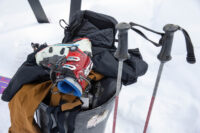
Unloading used gear has benefits beyond putting some cash in your pocket.
Why Sell Your Old Ski Stuff?
Yes, getting rid of your gear requires some effort and you’ve likely been scarred by previous experiences dealing with Craigslist flakes or paltry consignment checks. But even if the payday isn’t going to fund your next vacation, there are plenty of other reasons to move it along to a new home.
Environmental Benefits
I’ve written on environmental issues enough to know I’m not fully qualified to assess the exact impact of selling your old ski shell online, but giving someone the opportunity to buy your existing gear instead of buying new eliminates the need for raw material extraction and the energy and water costs of producing that new item.
In a best-case hypothetical, you sell your old jacket to your neighbor which creates no greenhouse gas emissions unless he drives to pick it up. Consider the alternative of him buying new which involves a global supply chain production and shipping process. (The Sustainable Apparel Coalition estimates global apparel industry production created more than a gigaton of carbon emissions in 2019 making up 2% of the world’s carbon emissions, not including shipping.)
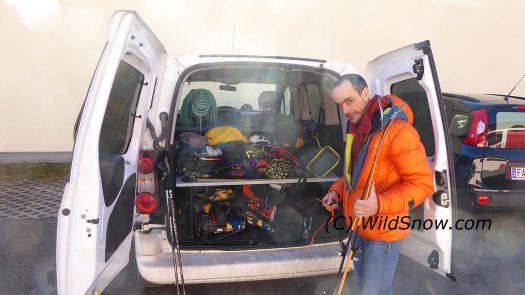
Decluttering
While it may be fun to look in your closet and get to choose from eight different pairs of skis and 4 different jackets, odds are you’re only regularly using a few of them. If you haven’t heard of Marie Kondo, you probably will soon. She’s the face of a movement to declutter by organizing and getting rid of possessions that don’t “spark joy” and she spun her best-selling book into a Netflix series.
You don’t need to join the decluttering cult to appreciate the benefits, however. Streamlining your kit removes decisions from each tour and clears space in your home. While my systems sometimes get derailed by gear testing, I like to have a single bag for each sport. If I find that my mountain biking gear no longer fits in my mountain biking duffel, I know it’s time to streamline.
Money in Your Pocket
The return on selling your old ski gear might not be much compared to what you paid for it, but it can at least soften the blow of new (or lightly used) gear. Whatever you get, it’s certainly more than you’re getting by letting it collect dust in your closet. Regardless of condition, the value of gear goes down each time a new version is released, so the best value you’ll get for it is right now.
Used gear sites and stores will often give you more in store credit than they will in cash, incentivizing using your sales to refill your gear closet. Some sites such as Powder7 and DPS (DPS Revive) have trade-in programs that let you use your old skis to get a discount on new ones.
Opportunity for Someone Else
If money and the future of the planet leave you unmoved, consider the poor! I’m constantly meeting aspiring backcountry skiers and snowboarders who haven’t gone on their first tour because they aren’t able to scrape together the thousands of dollars required for a brand-new backcountry ski kit. Used gear is one of the few ways to put together a backcountry setup without needing a few months’ rent/mortgage, but resale sites I spoke with all have more buyers than sellers, so your gear is likely useful to someone else.
How to Sell Your Old Ski Gear
Step 1: Evaluate what you have.
Collect all the gear you realistically won’t use enough to justify keeping, and for each item assess:
Age: If older than 10 years, you’re unlikely to get much for your gear, no matter how pristine the condition. Even 5 years is a long time for categories perceived to advance year to year such as skis and boots. If it’s old enough to be considered “retro” or “vintage”, say 25 years or more, you may have luck selling online via Ebay, Poshmark, or ThredUp with keywords that indicate it’s a throwback item.
Condition: Anything less than “very good” condition probably isn’t worth trying to sell. This means only minor signs of wear and nothing that needs repair. A worn look might be okay for a 1995 Mary J. Blige concert tee, but isn’t going to be of interest to folks shopping for reliable technical apparel and hardgoods.
Estimated Value: You can skip this step if you just want to offload your gear and aren’t too concerned with your payout. Search the used gear sites listed below to gauge the current selling price. For me, an item selling for $40 or less usually isn’t worth the hassle to sell. I expect the item will sell for at least 20% less than the listed price, half will be lost to shipping, taxes, consignment markdown, and/or fees, leaving me with $10 or less in my pocket. Plus the percentage-weighted cost that it might not sell at all–thereby wasting my time–brings it down to nearly zero. If you’re taking items in bulk for consignment, the marginal cost of adding smaller items is less and can add up and be worth it.
If none of these disqualify the item, put it in the “sell” pile. Everything else can be set aside for donation, recycling, or trash.
Step 2: Decide how much you want to work.
Not surprisingly, the more effort you put into photographing, describing, and listing your items, the greater percentage of the sold price you’ll retain. Platforms that handle the annoying dirty work for you generally take a higher percentage of the price and even if you list on a no-fee site such as Craigslist, you’ll command a higher price, get more interest, and deal with fewer questions if you put more time into a product listing.
If you have more than a few items to sell and that process sounds painful or seems unrealistic for you, you’ll likely want to use a bulk sales option where someone else handles the listing and sales process. A local ski shop or ski swap is an easy option in this vein, but there are online options below with varying degrees of involvement as minimal as shipping everything in a box and washing your hands of it until you get a check.
Where to Sell Your Used Ski Gear
Where you sell, recycle, or donate your gear will likely depend largely on where you live. Mountain towns and outdoorsy cities such as Denver and Seattle have lots of options for consignment and donation drop-off in person.
But if you don’t live among a large pool of prospective buyers of your old ski stuff, you’ll likely need to leverage one of the online marketplaces below to get your goods to someone who wants them.
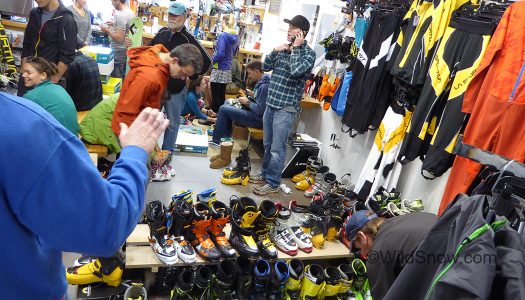
Local Shops and Swaps
Keeping it local when you can will save you money on shipping costs, seller fees, and carbon footprint. This might be as simple as offering gear up to neighbors and friends via social media or taking it to your local ski/board shop or ski swap events.
REI accepts certain items (no skis) in-person or through the mail via trade-in for new purchases through its ReSupply program. In order to be eligible for trade-in, items must be 6 years old or newer, be something REI sells already, and be in good condition. You can check eligibility and get a value estimate on the REI ReSupply website.

Online Classifieds
Craigslist and Facebook Marketplace are the most popular and both have a similar model in that they’re free services but you’ll need to devote time to listing, communication, and coordination to get your items sold.
Taking lots of quality photos and creating a detailed listing will cut down on back and forth, but you’ll likely still spend a lot of time answering dumb questions, driving to meet people that don’t show, and haggling over price. Those are the downsides.
When it goes smoothly, online classifieds can be a good way to get a high return on your pricier items since you don’t have to pay a middleman nor shipping costs. It can also be one of the only practical ways to sell oversized items that are prohibitively expensive to ship such as skis and ski racks.
Freecycle is a great way to unload gear for free locally, but you’ll still have to deal with some of the same communication and coordination headaches as selling via online classifieds and your community may or may not have an active Freecycle membership.

eBay
eBay is a step up from online classifieds with a much broader pool of buyers, but you’ll pay for shipping and they take 8-15% plus a host of optional upgrade fees. I’ve sold a decent amount of gear on eBay over the years and found it’s a good option for higher-value items such as new or like-new ski boots, but becomes more hassle than it’s worth for low-value items.
Listing isn’t too onerous as their platform helps you autofill a lot of key information, but you still need to take lots of high-quality photos to give buyers confidence in the condition. You also have to pack and ship items yourself and while you can specify no returns, eBay makes it difficult to say no if someone decides they don’t want your item after all. This doesn’t happen often if you’ve been transparent about the condition, but when it does, it puts you back at square one, minus the shipping you paid to get it to them.

GearTrade
GearTrade has been around since 1999, but its platform has evolved and grown considerably over the past few years and now has thousands of listings circulating at all times. The selling process also is one of the most hands-off that I’ve personally experienced.
You request a shipping label, box up your gear, send it off, and wait to get paid. (They also have an option where they’ll mail you a box and label.) There’s no requirement to identify your items and their team handles the photographing and listing and answers buyer questions as well as the sales and shipping process. You get an email when the item sells and when the payout hits your account and you can use the balance for purchases on the site or cash out.
The catch is that GearTrade takes a sizable cut compared to sites such as eBay in exchange for doing all the work. The seller fees range from 30 to 85%, with higher-dollar sales giving you a larger share than smaller items.
GearTrade President Aaron Provine says sellers get value for those fees.
“We’ve tried to make it so there’s not a lot of effort involved. If you can make some cash out of it, great. But there are reasons beyond profit. In general, most people are just throwing this stuff away. “
GearTrade is a great option for people who just want to get rid of a bunch of gear without tossing it in a landfill and would like a return for it, but aren’t up for the hassles of becoming an online seller. If I have a good pile of apparel that I know won’t ever get around to selling but that still has lots of life left in it, I’ll box it up and send it off to GearTrade.
Powder7 Ski Shop
Powder7 is a Golden, Colorado-based reseller that does a brisk business in lightly used ski gear and is a great option for buying and trading in skis, especially. I’ve purchased a few pairs of skis from the site over the years at deep discounts and they do a great job of thoroughly describing and photographing the condition of their used gear.
You can’t sell Powder7 skis or other gear outright, unfortunately, but they’ve got a trade-in program that’s worth a look if you’re selling to fund an upgrade. Alex Stettner, Content Coordinator at Powder7, told me touring gear draws a higher trade-in value because of the demand for backcountry gear from its buyers.
Other Options
Out and Back Outdoor: Offers mail-in for consignment but only drop-off for ski hardgoods at Public Lands stores. They announced a partnership in 2024 with NEMO Equipment where consumers can trade in gear (not just NEMO stuff) for cash or a NEMO gift card.
Poshmark: This popular online thrift giant specializes in fashion and general clothing but is a decent option for apparel.
Brand-Specific Trade-In or Recycling: Many outdoor brands now have trade-in, repair, and/or recycling programs including but not limited to: Arc’teryx, Stio, Patagonia, DPS, Smartwool, and The North Face. If you’re looking to refresh with the same brand or at least not throw your item away, it’s worth checking if that brand has a trade-in or recycle program.
Articles in Common: This zero-waste outdoor-specific start-up offers consignment, outright purchase, or donation of gently used outdoor gear that they sell, rehome with non-profits, or up-/down-/recycle– and promise nothing will end up in a landfill. This is a great option for end-of-life gear if you’ve tried to donate or recycle and come up empty. You must be a member ($39 annually) to sell or consign, but AIC founder Emme Hayes is offering free 1-Year memberships to WildSnow readers. Just send them an email at customercare {at} articlesincommon.com and mention WildSnow.
Got other ways to sell or otherwise unload your old ski gear? Let us know in the comments and we’ll add them in here.
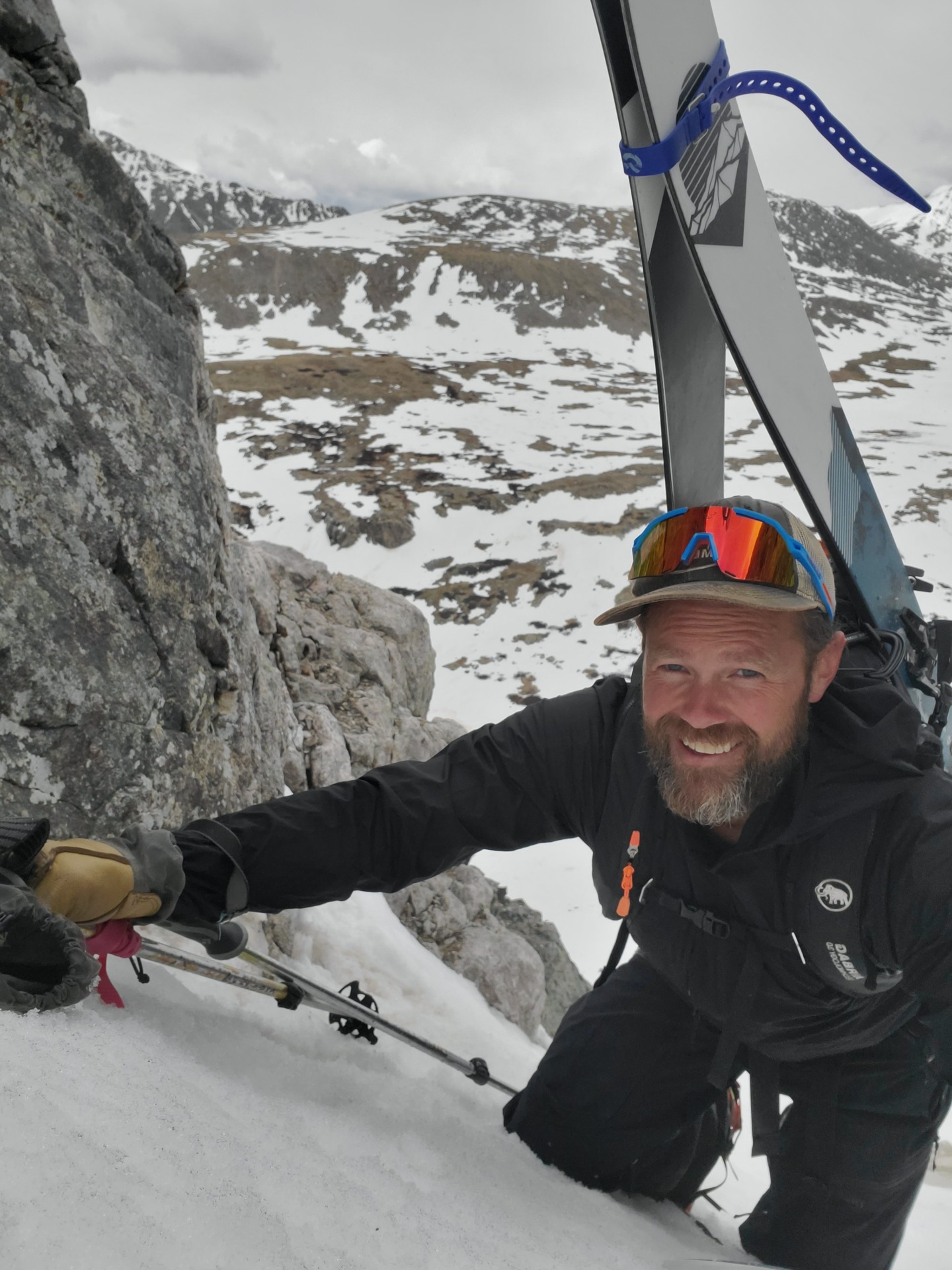
Justin Park is the Editor of Wild Snow. In 2009 while living in Hawaii, he got invited on a hut trip in Colorado. He had no backcountry gear, found Wild Snow, read up on backcountry skiing and bought some frame bindings for a pair of G3 Reverends so he didn’t have to buy touring boots. He moved to Breckenridge, CO a year later and today he skis 100+ days a year, most of them backcountry.

